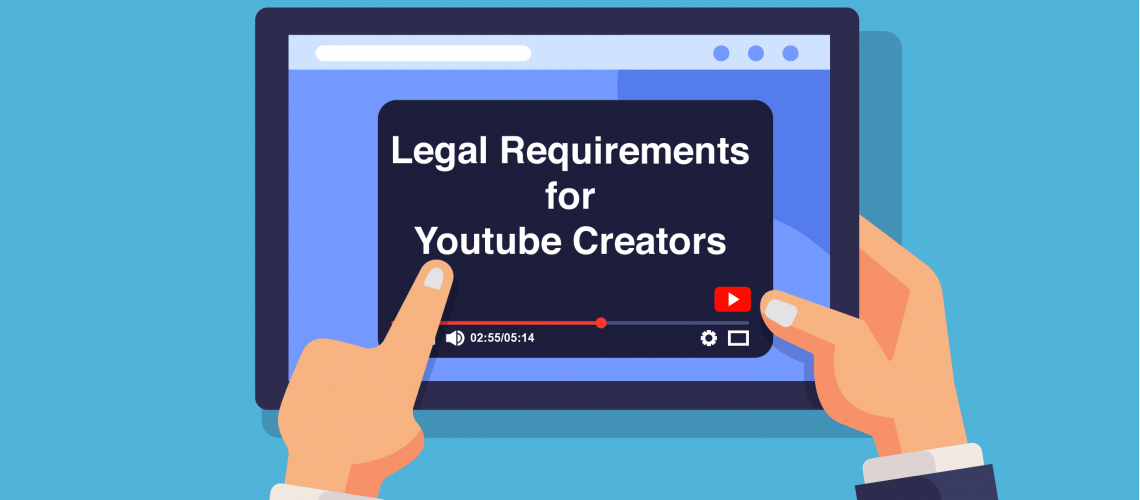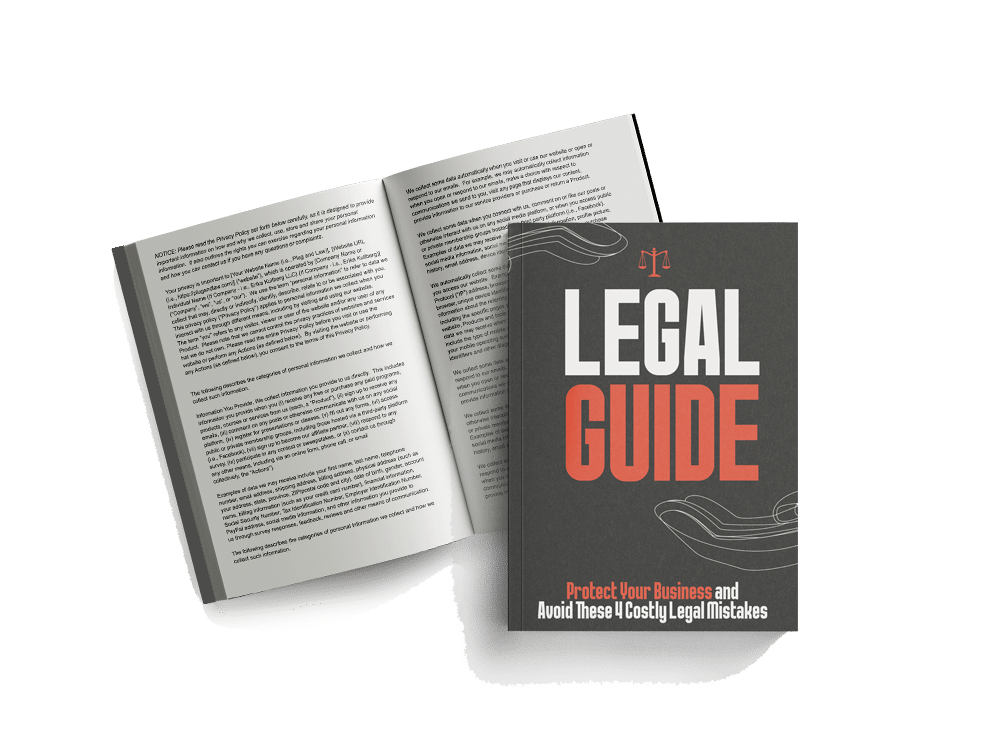This post will cover the ways to legally protect yourself if you have a YouTube channel, including how to do sponsored videos or use affiliate links. You will learn the ways to do proper disclosures so that you are in compliance with the Federal Trade Commission (FTC) Endorsement Guidelines (16 CFR Part 255) and Section 5 of the FTC Act, which prohibits deceptive advertising.
Table of Contents
Why YouTube Creators Need to Understand the FTC’s Endorsement Guidelines
First, let’s cover why it’s important to know the FTC rules, and the consequences for not following these rules.
The Federal Trade Commission has Endorsement Guidelines which are meant to protect consumers from unfair or deceptive advertising. If you have any financial incentive for talking about a product or service, your viewer has the right to know.
If you are a YouTube creator, it’s important to know these rules if you (i) do sponsored videos on your YouTube channel or (ii) use affiliate links in your description.
If you don’t follow these rules, you could be found to be in violation of the FTC Act and be forced to give up any money you received from your violations. For YouTube creators, this could mean any ad revenue from the video, money received from the sponsor for the video, commissions received from the affiliate links, and any other money received in connection with the violation.
Who Do the FTC’s Endorsement Guidelines Apply To?
The FTC’s Endorsement Guidelines apply to anyone with viewers in the U.S. Even if you’re not located in the U.S., if you have any subscribers or viewers in the U.S., these rules apply to you, because they are meant to protect U.S. consumers.
Sponsored Videos
When is a Disclosure Required?
A sponsored video is when a company gives you any kind of incentive to post a video. This could be cash (i.e., a company is paying you a specified amount of money to post the video).
That’s the most obvious and clear cut type of sponsored video. However, receiving something of value for free (i.e., a flight or a hotel stay), in exchange for posting a video would also be considered a sponsored video.
Note that the FTC requires disclosures for other incentives you may receive in connection with a video. While some of these may not fit the definition of a “sponsored video”, the FTC still requires disclosure in these cases.
This includes:
- If you receive a product or service that you’re reviewing for free
- If you receive a product or service that you’re reviewing for a discount
Even if the company doesn’t explicitly say to you that you’re receiving the product for free in exchange for mentioning it in a video, you still must disclose that you’ve received the product for free.
Essentially, if there’s any sort of incentive, you must disclose it, so that the viewer has an opportunity to have a transparent understanding of the relationship between you (as the content creator) and the company behind the product or service.
Do’s and Don’ts for Required Disclosure
Now that you understand what a sponsored video is and what additional circumstances would also require disclosure, let’s cover how to actually do disclosures so that they comply with FTC Rules. We’ll go over the Do’s and Don’ts for disclosing your relationship.
The basic rule is that the disclosures have to be clear and conspicuous. The best way to show you what the FTC means by “clear and conspicuous” is through the examples below.
DO’s
Do clearly state that a video is sponsored by a company. If you have received compensation or incentive to post the video, do clearly state that in your video. An example would be, saying in the video “This video is sponsored by Apple.”
Do clearly state that you received a product for free (or at a discount). If you received a product for free or at a discount, do clearly state that in your video. Examples would be, saying in the video “I received this product for free from Apple”, “Thank you to Apple for the free product”, or “I received this product at a discount from Apple”.
Do clearly state the relationship (if there is any) for every product you are reviewing or mentioning in your video. If you’re doing a video where you’re reviewing multiple products, you’ll need to disclose the connection for each product that you got for free or at a discount.
DONT’s
Flashing a disclosure quickly in the video is not a sufficient disclosure. You cannot simply flash a disclosure on the screen quickly and expect that to suffice. You have to give the viewer sufficient opportunity to notice, read and understand the disclosure.
Saying “Thank You” to the company is not a sufficient disclosure. The FTC specifically says that saying “Thank You” to the sponsoring company isn’t good enough as a disclosure, since it’s not clear that “Thank You” means that they are sponsoring the video. A “Thank You” also wouldn’t work if you’ve received a free or discounted product- you must clearly state that you’ve received the product for free or at a discount.
Putting the disclosure in the description is not a sufficient disclosure. If you have a sponsored video, you can’t just put that it’s a sponsored video in the description. You have to say in the actual video that it’s a sponsored video, since there’s a good chance that not every viewer of the video is going to read the description. If you want to be extra cautious, best practice is to have the disclosure in the actual video as well as the description.
Don’t put the disclosure at the end of your video. The FTC says that you should not just put the disclosure at the end of your YouTube video, since most people will not watch until the end of a video. It’s best practice to do the disclosure towards the beginning of the video, where people are more likely to see it.
Affiliate Links
When is a Disclosure Required?
An affiliate link is a custom link that a company provides to you, where if a viewer clicks on that link and takes some sort of action, you may receive a financial incentive, like a commission.
Perhaps the most popular affiliate program that many YouTube creators are familiar with is the Amazon affiliate program. With their affiliate program, you receive a custom affiliate link for each product you want to promote. If a viewer clicks on your amazon affiliate link and makes a purchase within a specified time frame, you may end up receiving a small percentage of the sale from Amazon.
Essentially, if there’s any financial incentive to you for a viewer clicking a link, disclosure is required by the FTC.
Do’s and Don’ts for Required Disclosure
As with sponsored videos, the basic rule is that the disclosures have to be clear and conspicuous. The examples below will give you a sense of what is considered “clear and conspicuous”.
DO’s
Do clearly state that you will (or may) receive a commission if the viewer clicks on the link. If you are using an affiliate link, you should make that clear next to or above the affiliate link by saying, for example, “I may receive a commission if you click on the link.”
DON’Ts
Don’t hide the affiliate link disclosure at the bottom of your description. Your disclosure must be placed close to the actual affiliate link, so that the viewer sees the disclosure at the same time that they see the affiliate link. Your disclosure cannot be buried under text at the bottom of your description, because putting your disclosure at the bottom of your description means that there’s less of a chance that the viewer is actually going to see the disclosure, or that they’ll realize it relates to the link you have at the top.
Saying “(affiliate link)” is not a sufficient disclosure. The FTC says writing “affiliate link” next to the affiliate link is not a sufficient disclosure, because some people may not know what an affiliate link is. That’s why you need to make it plain and clear what an affiliate link is, such as by stating “I may receive a commission if you click on the link.”
It’s important to remember that the FTC Guidelines are in place so that viewers aren’t deceived. Through these disclosure requirements, the FTC’s goal is to allow viewers to have a full understanding of any circumstances that could potentially sway your review or views towards a certain product, service or company.
If you have a website, it’s also important to have a comprehensive Disclaimer to make sure that you’re legally protected. You can generate a Disclaimer on Plug and Law.







